Generation of T-cell-receptor-negative CD8αβ-positive CAR T cells from T-cell-derived induced pluripotent stem cells
- PMID: 35941192
- PMCID: PMC9669107
- DOI: 10.1038/s41551-022-00915-0
Generation of T-cell-receptor-negative CD8αβ-positive CAR T cells from T-cell-derived induced pluripotent stem cells
Erratum in
-
Author Correction: Generation of T-cell-receptor-negative CD8αβ-positive CAR T cells from T-cell-derived induced pluripotent stem cells.Nat Biomed Eng. 2024 Nov;8(11):1500. doi: 10.1038/s41551-024-01181-y. Nat Biomed Eng. 2024. PMID: 38347164 No abstract available.
Abstract
The production of autologous T cells expressing a chimaeric antigen receptor (CAR) is time-consuming, costly and occasionally unsuccessful. T-cell-derived induced pluripotent stem cells (TiPS) are a promising source for the generation of 'off-the-shelf' CAR T cells, but the in vitro differentiation of TiPS often yields T cells with suboptimal features. Here we show that the premature expression of the T-cell receptor (TCR) or a constitutively expressed CAR in TiPS promotes the acquisition of an innate phenotype, which can be averted by disabling the TCR and relying on the CAR to drive differentiation. Delaying CAR expression and calibrating its signalling strength in TiPS enabled the generation of human TCR- CD8αβ+ CAR T cells that perform similarly to CD8αβ+ CAR T cells from peripheral blood, achieving effective tumour control on systemic administration in a mouse model of leukaemia and without causing graft-versus-host disease. Driving T-cell maturation in TiPS in the absence of a TCR by taking advantage of a CAR may facilitate the large-scale development of potent allogeneic CD8αβ+ T cells for a broad range of immunotherapies.
© 2022. The Author(s), under exclusive licence to Springer Nature Limited.
Conflict of interest statement
Competing interests.
R.A., T.L., R.C., B.V., are employees of Fate Therapeutics Inc. and have equity in the company. M.S. reports research funding from Takeda Pharmaceuticals, Atara Biotherapeutics and Fate Therapeutics. M.S. served on the scientific advisory board of St Jude Children’s Research Hospital.
Figures
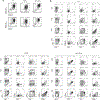



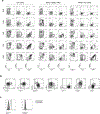

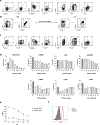



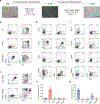


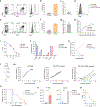



Similar articles
-
Induced Pluripotent Stem Cell-Derived Chimeric Antigen Receptor T Cells: The Intersection of Stem Cells and Immunotherapy.Cell Reprogram. 2023 Oct;25(5):195-211. doi: 10.1089/cell.2023.0041. Epub 2023 Sep 29. Cell Reprogram. 2023. PMID: 37782910 Review.
-
Induced Pluripotent Stem Cells (iPSCs) Provide a Potentially Unlimited T Cell Source for CAR-T Cell Development and Off-the-Shelf Products.Pharm Res. 2021 Jun;38(6):931-945. doi: 10.1007/s11095-021-03067-z. Epub 2021 Jun 10. Pharm Res. 2021. PMID: 34114161 Review.
-
3D-organoid culture supports differentiation of human CAR+ iPSCs into highly functional CAR T cells.Cell Stem Cell. 2022 Apr 7;29(4):515-527.e8. doi: 10.1016/j.stem.2022.02.009. Epub 2022 Mar 11. Cell Stem Cell. 2022. PMID: 35278370 Free PMC article.
-
Non-clinical efficacy, safety and stable clinical cell processing of induced pluripotent stem cell-derived anti-glypican-3 chimeric antigen receptor-expressing natural killer/innate lymphoid cells.Cancer Sci. 2020 May;111(5):1478-1490. doi: 10.1111/cas.14374. Epub 2020 Mar 31. Cancer Sci. 2020. PMID: 32133731 Free PMC article.
-
Optimization of the proliferation and persistency of CAR T cells derived from human induced pluripotent stem cells.Nat Biomed Eng. 2023 Jan;7(1):24-37. doi: 10.1038/s41551-022-00969-0. Epub 2022 Dec 12. Nat Biomed Eng. 2023. PMID: 36509913 Free PMC article.
Cited by
-
Programming CAR T Cell Tumor Recognition: Tuned Antigen Sensing and Logic Gating.Cancer Discov. 2023 Apr 3;13(4):829-843. doi: 10.1158/2159-8290.CD-23-0101. Cancer Discov. 2023. PMID: 36961206 Free PMC article.
-
"Off-the-Shelf" Allogeneic CAR Cell Therapy-Neglected HvG Effect.Curr Treat Options Oncol. 2023 May;24(5):409-441. doi: 10.1007/s11864-023-01061-8. Epub 2023 Apr 3. Curr Treat Options Oncol. 2023. PMID: 37010679 Review.
-
Engineered hematopoietic and immune cells derived from human pluripotent stem cells.Exp Hematol. 2023 Nov;127:14-27. doi: 10.1016/j.exphem.2023.08.006. Epub 2023 Aug 22. Exp Hematol. 2023. PMID: 37611730 Free PMC article. Review.
-
iPSC-derived trimodal T cells engineered with CAR, TCR, and hnCD16 modalities can overcome antigen escape in heterogeneous tumors.Cell Rep Med. 2025 Jul 15;6(7):102195. doi: 10.1016/j.xcrm.2025.102195. Epub 2025 Jun 19. Cell Rep Med. 2025. PMID: 40541190 Free PMC article.
-
Unlocking the potential of iPSC-derived immune cells: engineering iNK and iT cells for cutting-edge immunotherapy.Front Immunol. 2024 Aug 30;15:1457629. doi: 10.3389/fimmu.2024.1457629. eCollection 2024. Front Immunol. 2024. PMID: 39281684 Free PMC article. Review.
References
Publication types
MeSH terms
Substances
Grants and funding
LinkOut - more resources
Full Text Sources
Other Literature Sources
Molecular Biology Databases

